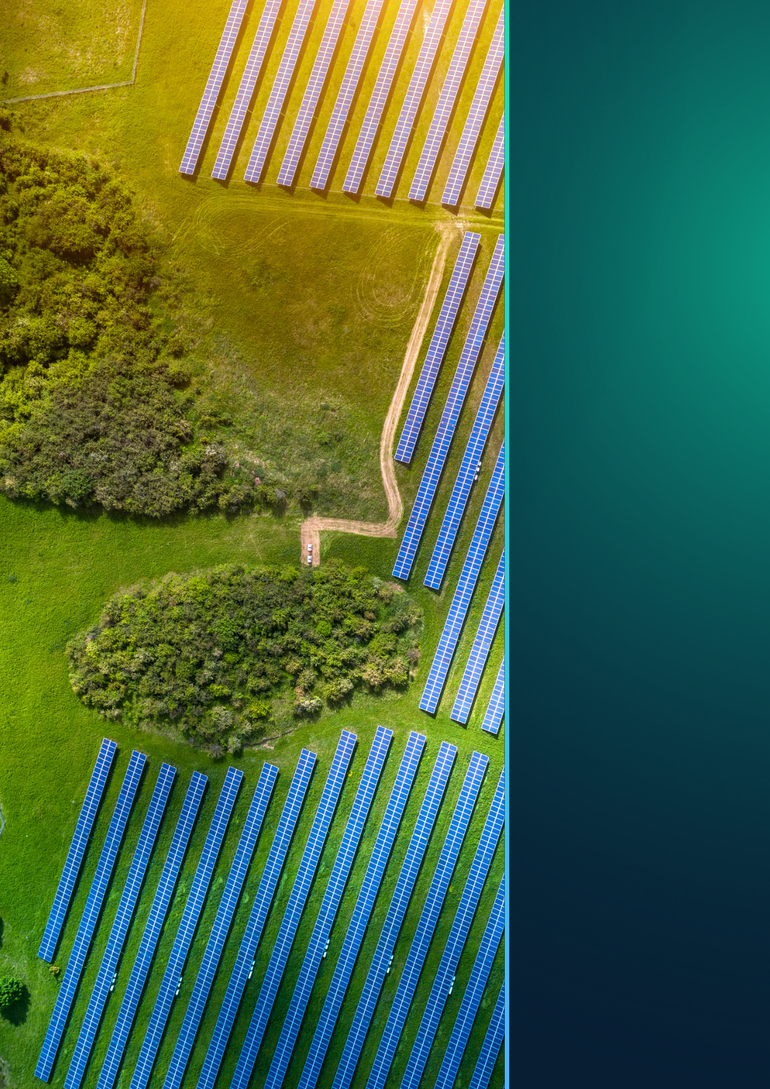Sustainability
We are convinced that environmental and social performance goes hand in hand with financial performance to deliver long term sustainable value to our investors. This approach has been a cornerstone of our investment strategy since our company was founded in 2021. At Hy24, we uphold the highest standards of financial, environmental, and social performance.

Hy24 in the ESG regulatory landscape
As a French asset management company, we are committed to designing and managing funds that adhere to the highest sustainability standards. At the European level, the EU has adopted two regulations which aims at reorienting investments towards sustainable technologies and companies: the Sustainable Finance Disclosure Regulation (SFDR) and the EU Taxonomy for sustainable activities (Regulation (EU) 2020/852). What do these regulations entail exactly.
The SFDR standards
The Sustainable Finance Disclosure Regulation (SFDR) mandates how financial market participants and advisors must disclose sustainability information. Its core aim is to set conditions for claiming sustainable goals and the required disclosures to support such claims.
The SFDR details the content, methods, and presentation of required disclosures for financial products promoting environmental or social characteristics and sustainable investment objectives. This includes information in pre-contractual documents, websites, and periodic reports. Together with the EU Taxonomy, these regulations aim to prevent “greenwashing.”

Our funds comply with the requirements of the article 9 of the SFDR regulation meaning that they are only investing in sustainable assets. These funds must define and integrate an environmental or social objective into their investment strategy, as well as assess potential adverse impacts on other social and environmental aspects.
On the basis of the standards of the SFDR, “Article 9 Funds” are required to make only “sustainable investments” in “sustainable activities” which encompasses “economic activities that contribute to an environmental objective, as measured, for example, by key resource efficiency indicators on the use of energy, renewable energy, raw materials, water and land, on the production of waste, and greenhouse gas emissions, or on its impact on biodiversity and the circular economy”.
The European taxonomy
The EU Taxonomy regulation is a classification system providing more detailed information on what constitutes environmentally sustainable investments. In concrete terms, what definitions does the European taxonomy refer to?
The Taxonomy Disclosure Regulation defines “taxonomy aligned economic activity’’ as one that meets all criteria of article 3 of the Taxonomy Regulation:
- Substantial contribution to one (or several) of the six environmental objectives listed in the Taxonomy: mitigation of climate change, adaptation to climate change, sustainable use and protection of aquatic and marine resources, transition to a circular economy, prevention and reduction of pollution, and protection and restoration of biodiversity and ecosystems.
- Do No Significantly Harm any of the six environmental objectives listed in the Taxonomy
- Minimum social safeguards compliance

First, the activity must contribute significantly to one (or several) of the six objectives listed in the Taxonomy such as climate change mitigation, climate change adaptation or pollution prevention and control.
Article 10 of the Taxonomy Regulation provides that an economic activity contributes significantly to climate change mitigation if it contributes substantially to the stabilisation of greenhouse gas concentrations in the atmosphere at a level which prevents dangerous anthropogenic interference with the climate system consistent with the long-term temperature goal of the Paris Agreement through the avoidance or reduction of greenhouse gas emissions or the increase of greenhouse gas removals by:
- generating, transmitting, storing, distributing, or using renewable energy
- improving energy efficiency
- increasing clean or climate-neutral mobility
- switching to the use of sustainably sourced renewable materials
- increasing the use of environmentally safe carbon capture and utilisation (CCU) and carbon capture and storage (CCS) technologies that deliver a net reduction in greenhouse gas emissions.
- strengthening land carbon sinks, including through avoiding deforestation and forest degradation, restoration of forests, sustainable management and restoration of croplands, grasslands and wetlands, afforestation, and regenerative agriculture.
- establishing energy infrastructure required for enabling the decarbonisation of energy systems.
- producing clean and efficient fuels from renewable or carbon-neutral sources
- enabling any of the activities listed above in accordance with article 16
Second, it must also “Do No Significant Harm” (“DNSH”) to the five other activities.
Thirdly, the activity must comply with minimum safeguards, namely the OECD Guidelines for Multinational Enterprises and the UN Guiding Principles on Business and Human Rights.
Investing to accelerate the global energy transition
Low-carbon hydrogen production, storage, and distribution are crucial for reducing carbon emissions. Hydrogen is one of the key solutions to facilitate the use of renewable and low-carbon energy in sectors previously inaccessible (which cannot be decarbonized only through electrification) or too costly, such as chemical production, fertilizers, steel, cement manufacturing, heavy-duty transport, aviation, and maritime industries.
Hy24's investments in clean and low-carbon hydrogen projects will directly reduce carbon emissions, supporting the Paris Agreement's long-term goals. By supporting companies within the hydrogen value chain, Hy24 will accelerate the commercialization of technologies that integrate renewable energy, enable clean transportation, and decarbonize energy systems.
Hydrogen's role in manufacturing, transmission, storage, and use for transport and energy production is recognized by the EU Taxonomy framework and is essential for achieving net zero emissions in the EU. Hy24 aims to align its investments with the EU Taxonomy's climate change mitigation objectives. All investments will significantly contribute to reducing CO2 emissions, either directly or as enablers of renewable energy, clean mobility, decarbonized energy systems, or production of clean fuels.
Through our investments and support to our portfolio companies, we aim to contribute to climate change mitigation.







